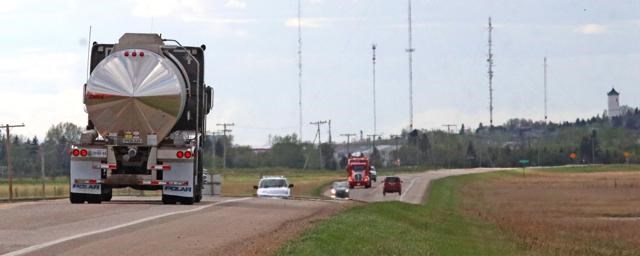Did you know that nearly half of all collisions happen in intersections, even though intersections make up only a fraction of the total kilometres of road in Saskatchewan?
Think about how many intersections you pass through on a given day, including controlled and uncontrolled intersections, four-way stops, T-intersections, and merging onto higher-speed roadways. Are you confident you know what you’re supposed to do at each one?
SGI and law enforcement want you to think about that for January’s traffic safety spotlight on intersections.
On average, 2,503 people are injured and 31 people are killed at intersections each year in this province. Many fines for disobeying traffic laws at intersections could cost drivers $230 – for infractions from disobeying stop signs (rolling stops aren’t stops, for the record), to improper turns, to failing to properly yield the right of way. And that’s not to mention what could happen if a collision occurs.
Making sure you know the rules will protect other drivers and road users, as well as your wallet and your vehicle, when travelling through intersections.
“We want drivers to be extra alert when travelling through intersections,” said Penny McCune, Chief Operating Officer of the Auto Fund. “There is a lot happening at these junctures, with vehicles stopping, starting and turning, and pedestrians crossing. Drivers should not assume that everyone else will obey the rules of the road.”
To protect yourself and others when travelling through intersections, it is important to:
• Ensure you’re in the correct lanefor where you want to go. Changing lanes at the last minute doesn’t give you a lot of time to check blind spots, and changing lanes while in an intersection might surprise others on the road.
• Speaking of which, signalling is a driver’s best friend for letting other drivers and pedestrians know what you intend to do.
• Give the road your full attention.There’s a reason you turn down the music when you’re looking for a street sign – you need to focus: on other vehicles, pedestrians, signs, lights, etc.
• Expect the unexpected.Remember IPDE – identify, predict, decide, and execute. This helps you prepare for different situations on the road, so the brake lights in front of you don’t catch you off guard.
• Give other drivers room.Don’t tailgate or rush the light. Yellow lights are there to help safely clear the intersection, not so you can speed through at the last moment. And on that note, be sure you have enough room to clear the intersection when traffic is heavy. Blocking intersections is dangerous.
Training yourself to think about rail safety
This year, SGI’s Traffic Safety Spotlights will have both a main focus and a sub-focus each month. This month, that sub-focus is on rail safety.
Railway crossings are another type of intersection that drivers may come across, with one big difference: trains always have the right of way and can take more than a kilometre to come to a complete stop. Drivers need to respect the size and power of trains, because when a motor vehicle collides with a train, the train always wins.
Collisions between trains and motor vehicles result in an average of 16 collisions, nine injuries, and two deaths each year in Saskatchewan.
Railway crossing tips:
• Be alert and prepared to stop – many train crossings, especially in rural Saskatchewan, are uncontrolled (no lights or stop arms) which makes it even more important to be aware
• Never try to race through a crossing before a train arrives
• Exercise caution around railway tracks even if you don't see a train approaching
• Be sure to look for multiple sets of tracks
• Watch for other vehicles stopping in front of you
• Never be put in a position where you are stopped on the tracks; if traffic is backed up, make sure there is room to fully cross the tracks before proceeding.




